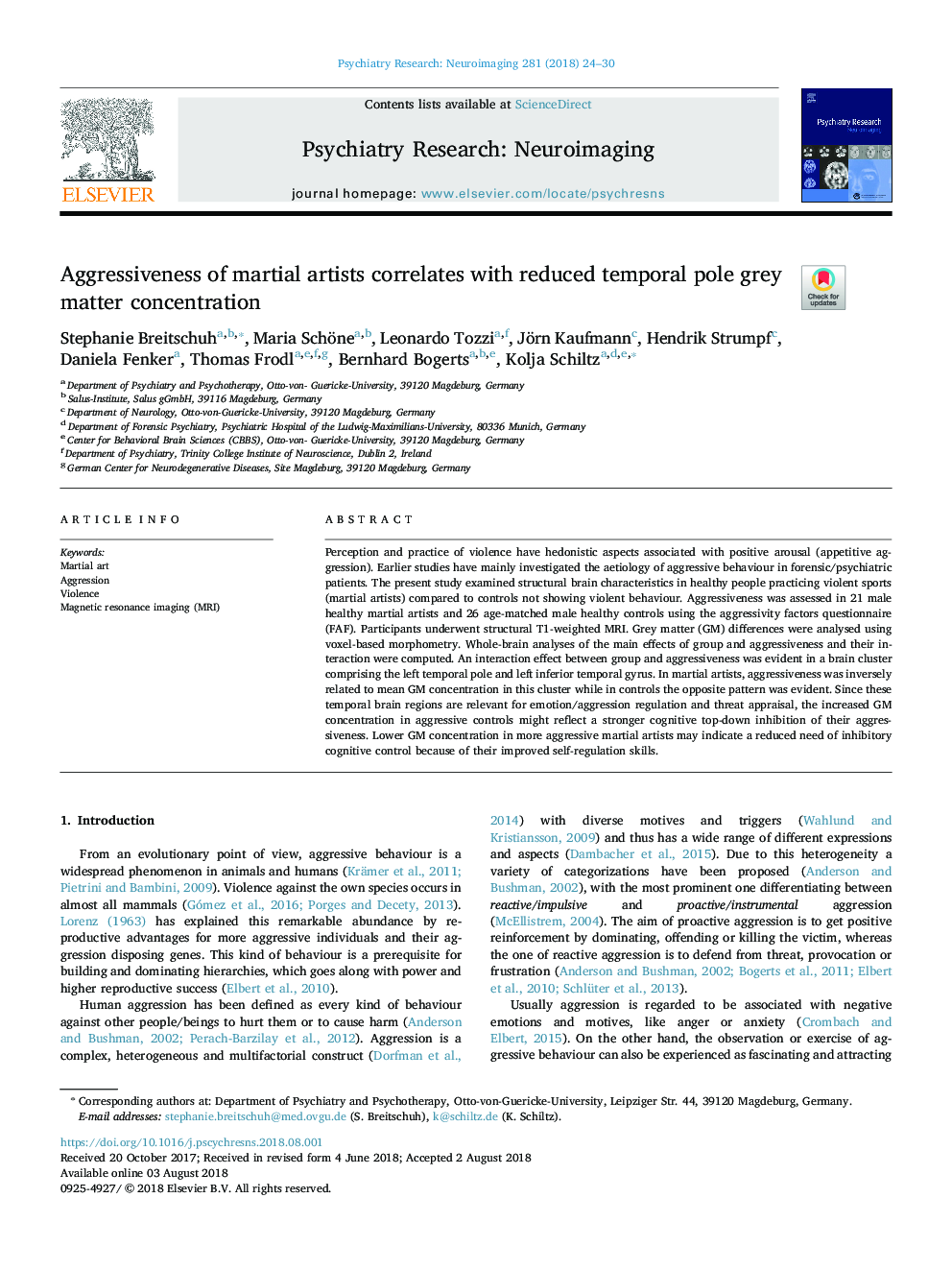| Article ID | Journal | Published Year | Pages | File Type |
|---|---|---|---|---|
| 10150811 | Psychiatry Research: Neuroimaging | 2018 | 7 Pages |
Abstract
Perception and practice of violence have hedonistic aspects associated with positive arousal (appetitive aggression). Earlier studies have mainly investigated the aetiology of aggressive behaviour in forensic/psychiatric patients. The present study examined structural brain characteristics in healthy people practicing violent sports (martial artists) compared to controls not showing violent behaviour. Aggressiveness was assessed in 21 male healthy martial artists and 26 age-matched male healthy controls using the aggressivity factors questionnaire (FAF). Participants underwent structural T1-weighted MRI. Grey matter (GM) differences were analysed using voxel-based morphometry. Whole-brain analyses of the main effects of group and aggressiveness and their interaction were computed. An interaction effect between group and aggressiveness was evident in a brain cluster comprising the left temporal pole and left inferior temporal gyrus. In martial artists, aggressiveness was inversely related to mean GM concentration in this cluster while in controls the opposite pattern was evident. Since these temporal brain regions are relevant for emotion/aggression regulation and threat appraisal, the increased GM concentration in aggressive controls might reflect a stronger cognitive top-down inhibition of their aggressiveness. Lower GM concentration in more aggressive martial artists may indicate a reduced need of inhibitory cognitive control because of their improved self-regulation skills.
Related Topics
Life Sciences
Neuroscience
Biological Psychiatry
Authors
Stephanie Breitschuh, Maria Schöne, Leonardo Tozzi, Jörn Kaufmann, Hendrik Strumpf, Daniela Fenker, Thomas Frodl, Bernhard Bogerts, Kolja Schiltz,
